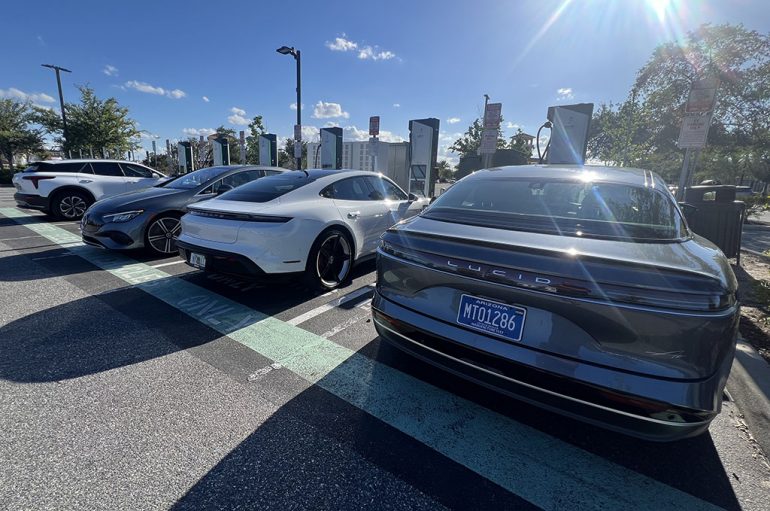
The federal government has allocated $5 billion over five years to develop a comprehensive network of electric vehicle (EV) charging stations along interstate highways. The goal is to place stations at 50-mile intervals nationwide. However, over two years into the initiative, only eight stations have opened, spread across just six states, highlighting the slow progress of the National Electric Vehicle Infrastructure (NEVI) program.
The slow rollout underscores the complexities of creating a national charging infrastructure. The deployment process is fragmented, with states controlling the distribution of federal funds. Companies awarded funds face varying state regulations and must coordinate with diverse public and private utilities, each with its own operational plans and grid systems. This lack of uniformity hampers the ability to implement a standardized, efficient strategy.
Also, don’t forget that you can get discounted new car pricing with a free quote through qualified local dealer partners.
As of May 28, twenty-three states have started distributing NEVI awards. States like Ohio, New York, Colorado, and Pennsylvania are progressing quickly, while others, such as Idaho, Mississippi, Nevada, South Carolina, South Dakota, and Wyoming, lag behind. The application process itself can take two years, contributing to delays in station construction and operation.
Most NEVI-funded charging stations are expected to be operational by 2027. After covering interstate routes, funding will extend to urban, rural, and metro areas. Despite this, limited charging infrastructure remains a primary deterrent for potential EV buyers. The Biden administration aims to have 500,000 public chargers by 2030, yet only 64,000 chargers, with 174,000 plugs, are currently available in the U.S., mainly in coastal and urban regions.
States with higher EV adoption rates are more eager to install chargers, while those with fewer EVs, like Wyoming, are less motivated due to concerns about maintenance costs and low usage rates. Financial constraints also pose a challenge. States such as Minnesota, Iowa, Kentucky, and North Carolina cap the return on investment for charging operators, making it financially unattractive for businesses to participate.
The EV charging network buildout faces a catch-22: slow charger deployment hinders EV sales, and slow EV sales deter further investment in charging infrastructure. Despite these challenges, the program has spurred some investment and planning in charger deployment. Companies like Pilot Co., which has secured funding for 41 charging stations, are adopting a long-term view, anticipating eventual profitability from associated business opportunities rather than just electricity sales.
While the NEVI program has made some progress, the slow rollout of EV charging stations highlights significant obstacles in developing a national network. States’ varying priorities, regulatory complexities, and financial challenges contribute to the sluggish pace. Nonetheless, the program is beginning to catalyze investment and planning, crucial for the future of EV adoption and infrastructure development.